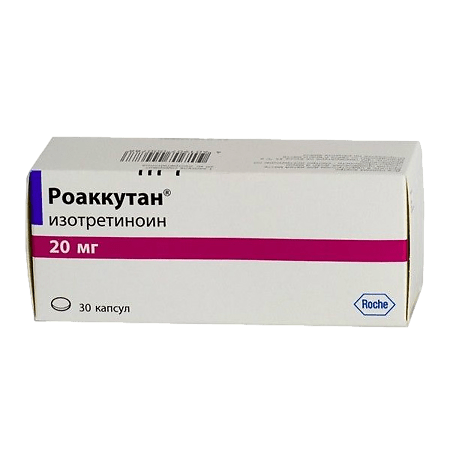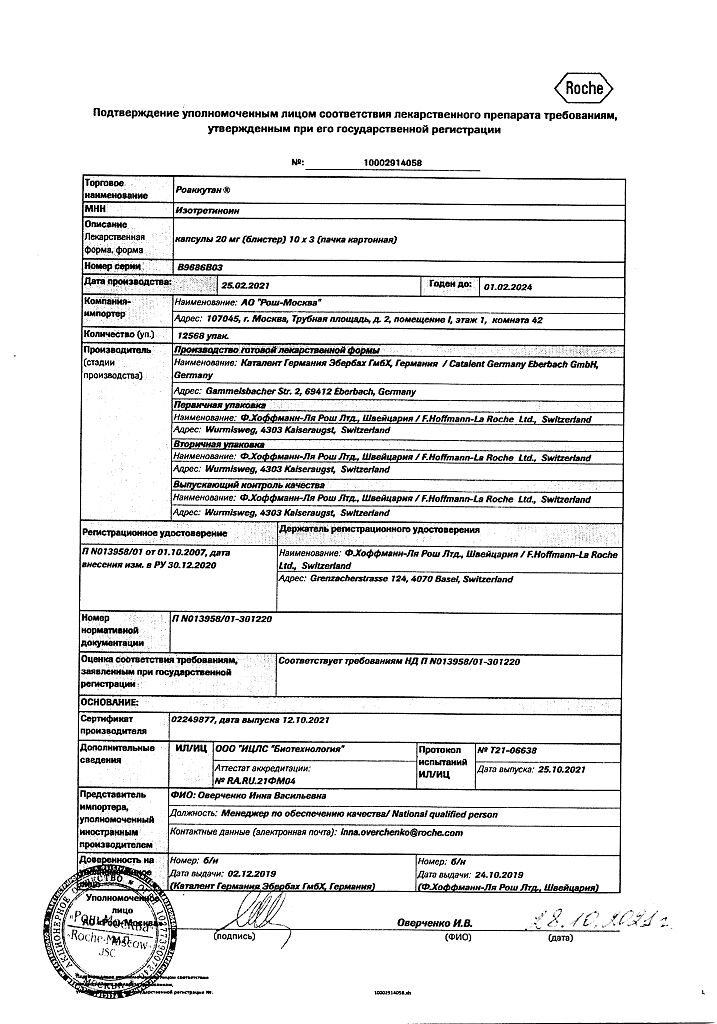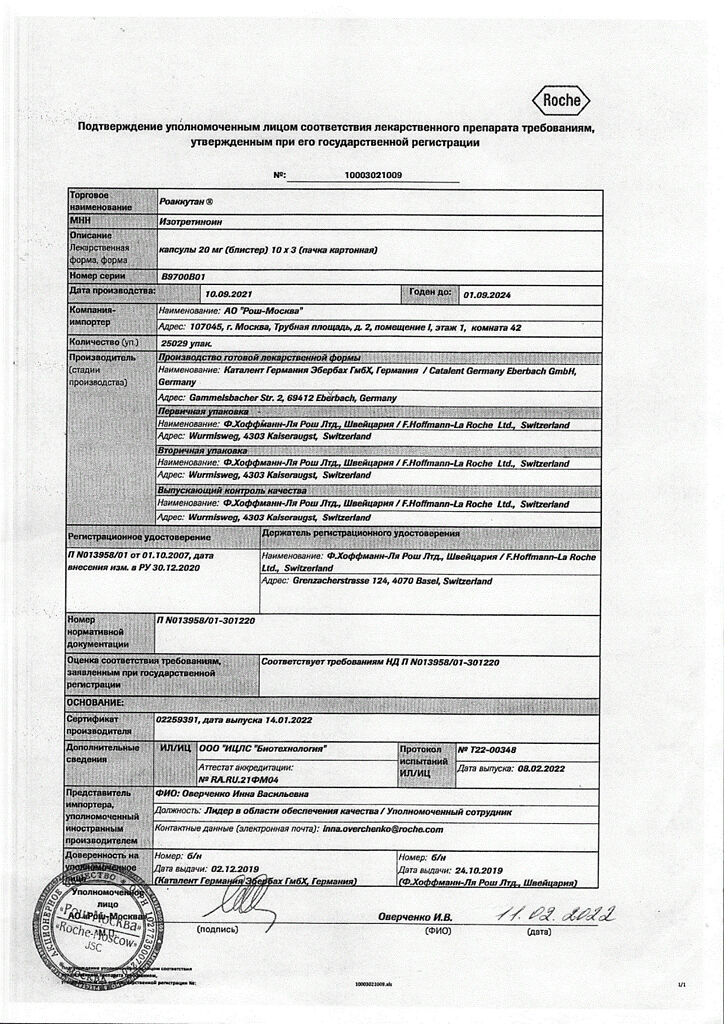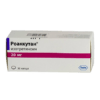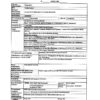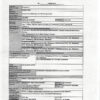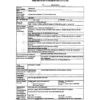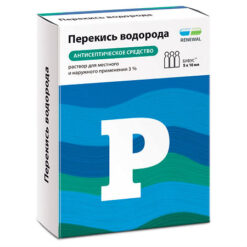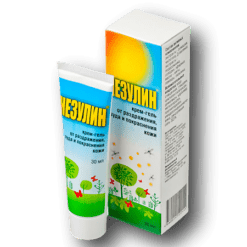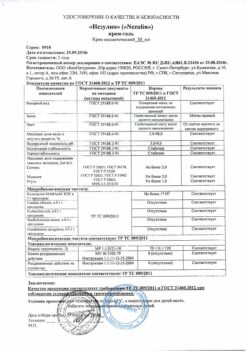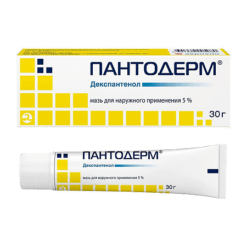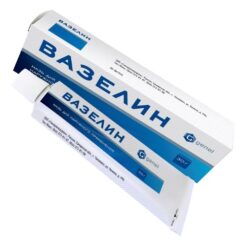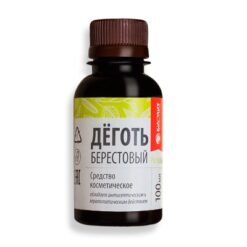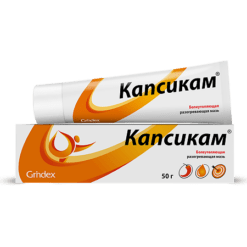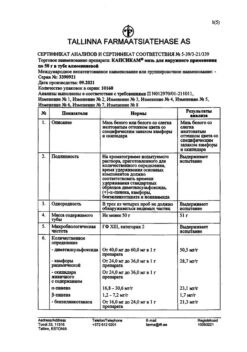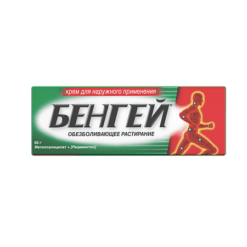No products in the cart.
Roaccutane, 20 mg capsules 30 pcs
€98.37 €85.26
Description
Pharmacotherapeutic group
Acne treatment
ATX code [D10BA01]
Pharmacological action
br> Retinoid for systemic treatment of acne
Isotretinoin is the stereoisomer of fully transretinoic acid (tretinoin).
The exact mechanism of action of Roaccutan® is not yet clear, but it has been established that improvement in the clinical picture of severe acne is associated with suppression of sebaceous glands activity and histologically confirmed reduction in their size. In addition, the anti-inflammatory effect of isotretinoin on the skin has been proven.
Roaccutane® inhibits the proliferation of sebocytes and works on acne by restoring normal cell differentiation. Sebum is a major substrate for Propionibacterium acnes growth, so reducing sebum production suppresses bacterial duct colonization.
Pharmacokinetics
Because the kinetics of isotretinoin and its metabolites are linear, plasma concentrations during therapy can be predicted from data obtained after a single dose. This property of the drug also indicates that it does not affect the activity of hepatic enzymes involved in drug metabolism.
Is absorption
The absorption of isotretinoin from the gastrointestinal tract varies. The absolute bioavailability of isotretinoin has not been determined because there is no human formulation for intravenous use. However, extrapolation of data obtained in an experiment in dogs suggests rather low and variable systemic bioavailability.
In acne patients, maximum plasma concentrations (Smax) in equilibrium after fasting administration of 80 mg of isotretinoin were 310 ng/mL (range 188-473 ng/mL) and were reached after 2-4 hours. Plasma concentrations of isotretinoin are approximately 1.7 times higher than blood concentrations, due to poor isotretinoin penetration into erythrocytes.
Eating isotretinoin with food increases bioavailability by a factor of 2 compared to fasting.
Distribution
Isotretinoin binds strongly (99.9%) to plasma proteins, primarily to albumin, so that in a wide range of therapeutic concentrations the free (pharmacologically active) fraction of the drug is less than 0.
The volume of distribution of isotretinoin in humans has not been determined because there is no intravenous dosage form.
The isotretinoin blood equilibrium concentrations (Cmin ss) in patients with severe acne who received 40 mg of the drug twice daily ranged from 120 to 200 ng/ml.
The 4-oxo-isotretinoin concentrations in these patients were 2.5 times greater than those of isotretinoin. There is insufficient data on tissue penetration of isotretinoin in humans. Concentrations of isotretinoin in the epidermis are half as high as in serum.
Metabolism
The three main metabolites found in plasma after oral administration are 4-oxo-isotretinoin, tretinoin (fully transretinoic acid) and 4-oxo-retinoin. The main metabolite is 4-oxo-isotretinoin, whose plasma concentrations in equilibrium are 2.5 times higher than those of the original drug. Less significant metabolites have also been found, including also glucuronides, but the structure of not all metabolites has been established.
The metabolites of isotretinoin have biological activity confirmed in several laboratory tests. Thus, the clinical effects of the drug in patients may be the result of the pharmacological activity of isotretinoin and its metabolites.
Because in vivo isotretinoin and tretinoin (fully transretinoic acid) are reversibly converted to each other, the metabolism of tretinoin is related to that of isotretinoin. 20-30% of the dose of isotretinoin is metabolized by isomerization.
In human isotretinoin pharmacokinetics, enterohepatic circulation may play a significant role.
In vitro metabolism studies have shown that several cytochrome P450 (CYP) enzymes are involved in the conversion of isotretinoin to 4-oxo isotretinoin and tretinoin. None of the isoforms appears to play a dominant role. Roaccutane® and its metabolites have no significant effect on CYP enzyme activity.
After oral administration of radioactively labeled isotretinoin, approximately equal amounts are detected in the urine and feces. The terminal phase elimination half-life for the unchanged drug in acne patients averages 19 hours. The terminal phase half-life for 4-oxo-isotretinoin appears to be longer, averaging 29 hours.
Isotretinoin refers to natural (physiological) retinoids. Endogenous retinoid concentrations are restored approximately 2 weeks after stopping Roaccutane®.
Pharmacokinetics in special clinical cases
Because isotretinoin is contraindicated in patients with liver dysfunction, there are limited data on the pharmacokinetics of the drug in this group of patients.
Indications
Indications
Acne that does not respond to other therapies. Severe acne (cystic nodules, conglobate acne or acne with risk of scarring).
Active ingredient
Active ingredient
Composition
Composition
How to take, the dosage
How to take, the dosage
Standard dosing regimen
Internal, with meals once or twice daily.
The therapeutic efficacy of Roaccutane and its side effects are dose-dependent and vary from patient to patient. This dictates the need for individual dose selection during treatment.
The treatment with Roaccutane should be started with a dose of 0.5 mg/kg per day. In most patients the dose varies from 0.5 to 1.0 mg/kg body weight per day. Patients with very severe forms of the disease or with torso acne may require higher daily doses, up to 2.0 mg/kg.
The rate of remission and relapse prevention have been shown to be optimal with a course dose of 120-150 mg/kg (per course of treatment), so the duration of therapy in specific patients varies depending on the daily dose. Complete remission of acne is often achieved in 16-24 weeks of treatment. In patients who are very poorly tolerant of the recommended dose, treatment can be continued at a lower dose, but for longer.
In most patients, acne completely disappears after a single course of treatment. If there is a clear recurrence, a second course of treatment with Roaccutane at the same daily and course dose as the first course is indicated. Because improvement may continue up to 8 weeks after discontinuation of the drug, a second course should not be prescribed until after this time.
Dosing in special cases
In patients with severe renal impairment, treatment should begin with a lower dose (e.g., 10 mg/day) and then be increased to 1 mg/kg/day or the maximum tolerated dose.
Interaction
Interaction
Because of a possible exacerbation of hypervitamin A symptoms, concomitant administration of Roaccutane and vitamin A should be avoided.
Because tetracyclines may also cause increased intracranial pressure, their use in combination with Roaccutane is contraindicated.
Isotretinoin may weaken the effectiveness of progesterone preparations, so low-dose progesterone contraceptives should not be used.
Combined use with topical keratolytic or exfoliative medications to treat acne is contraindicated because of the potential for increased local irritation.
Special Instructions
Special Instructions
Roaccutane should only be prescribed by physicians, preferably dermatologists, who have experience using systemic retinoids and are aware of the risk of teratogenicity of the drug. Both female and male patients should be given a copy of the patient information booklet.
In order to avoid accidental exposure of others to the drug, donor blood should not be taken from patients who are receiving or have received Roaccutane shortly before (1 month).
It is recommended that liver function and liver enzymes be monitored before treatment, 1 month after it starts, and then every 3 months or as indicated. Transient and reversible increase in liver transaminases has been noted, in most cases within normal values. If hepatic transaminase levels exceed the norm, it is necessary to reduce the dose of the drug or cancel it.
Serum lipid levels should also be determined on an empty stomach before treatment, 1 month after the start, and then every 3 months or as indicated. Usually lipid concentrations normalize after dose reduction or discontinuation of the drug, as well as with diet. Clinically significant increases in triglyceride levels should be controlled, since elevations above 800 mg/dL or 9 mmol/L may be accompanied by the development of acute pancreatitis, possibly with a fatal outcome. In case of persistent hypertriglyceridemia or symptoms of pancreatitis, Roaccutane should be discontinued.
In rare cases, depression, psychotic symptoms and very rarely – suicide attempts have been described in patients receiving Roaccutane. Although their causal relationship to the use of the drug has not been established, special caution should be exercised in patients with a history of depression and all patients should be monitored for depression during treatment with the drug, referring them to an appropriate specialist if necessary. However, withdrawal of Roaccutane may not lead to disappearance of symptoms and further monitoring and treatment by a specialist may be necessary.
In rare cases, an exacerbation of acne is noted at the start of therapy, which resolves within 7-10 days without adjusting the dose of the drug.
Several years after the use of Roaccutane to treat dyskeratoses at a total course dose and duration of therapy higher than recommended for acne therapy, bone changes developed, including premature closure of epiphyseal growth zones, hyperostosis, and calcification of ligaments and tendons. Therefore, when prescribing the drug to any patient, the ratio of possible benefits to risks should be carefully evaluated beforehand.
Patients receiving Roaccutane are advised to use moisturizing ointment or body cream, lip balm to reduce dry skin and mucous membranes at the beginning of therapy.
In post-marketing surveillance of Roaccutane there have been cases of severe skin reactions such as erythema multiforme, Stevens-Johnson syndrome and toxic epidermal necrolysis. These phenomena may be serious and lead to disability, life-threatening conditions, hospitalization or fatal outcome. Patients receiving Roaccutane should be closely monitored to detect severe skin reactions and, if necessary, to decide whether to withdraw the drug.
Muscle and joint pain, increased serum creatinine phosphokinase may occur while taking Roaccutane, which may be accompanied by decreased tolerance to vigorous physical activity.
Deep chemical dermoabrasion and laser treatment should be avoided in patients receiving Roaccutane, as well as within 5-6 months after the end of treatment because of the possibility of increased scarring in atypical areas and the occurrence of hyper- and hypopigmentation. During treatment with Roaccutane and for 6 months after treatment, waxing should not be performed due to the risk of epidermal detachment, scarring, and dermatitis.
Because some patients may have decreased visual acuity at night, which sometimes persists after therapy ends, patients should be informed about the possibility of this condition, advising them to exercise caution when driving at night. Visual acuity should be monitored closely.
Dryness of the conjunctiva, corneal opacities, worsening of night vision, and keratitis usually go away after discontinuation of the drug. If the mucous membrane of the eyes is dry, moisturizing eye ointment or artificial tears may be applied. Patients with dry conjunctiva should be monitored for possible keratitis. Patients with vision complaints should be referred to an ophthalmologist and consideration should be given as to whether Roaccutane should be withdrawn. If contact lenses are intolerant, glasses should be used for the duration of therapy.
Exposure to sunlight and UV rays should be limited. If necessary, sunscreen with a high SPF of at least 15 should be used.
Rare cases of benign intracranial hypertension (“pseudotumor of the brain”) have been described, including when combined with tetracyclines. Roaccutane should be stopped immediately in these patients.
In therapy with Roaccutane, inflammatory bowel disease may occur. In patients with severe hemorrhagic diarrhea, Roaccutane should be stopped immediately.
Rare cases of anaphylactic reactions have been described that occurred only after prior external use of retinoids. Severe allergic reactions dictate that the drug must be withdrawn and the patient must be closely monitored.
High-risk patients (with diabetes mellitus, obesity, chronic alcoholism, or fat metabolism disorders) may require more frequent laboratory monitoring of glucose and lipid levels when treated with Roaccutane.
If diabetes is present or suspected, more frequent glycemic determination is recommended.
Contraindications
Contraindications
Pregnancy, lactation, hepatic insufficiency, hypervitaminosis A, marked hyperlipidemia, concomitant therapy with tetracyclines.
Hypersensitivity to the drug or its components.
Children under 12 years of age.
Side effects
Side effects
Most side effects of Roaccutane are dose-dependent. Generally, the recommended doses have a benefit to risk ratio that, given the severity of the disease, is acceptable to the patient. Usually, side effects are reversible after adjusting the dose or cancelling the drug, but some may persist after treatment is stopped.
The symptoms associated with hypervitaminosis A: dry skin, mucous membranes including lips (cheilitis), nasal cavity (bleeding), pharynx (hoarseness of voice), eyes (conjunctivitis, reversible corneal opacity and contact lens intolerance).
The skin and its appendages: rash, itching, facial erythema/dermatitis, sweating, pyogenic granuloma, paronychia, onychodystrophy, increased growth of granulation tissue, persistent thinning of hair, reversible hair loss, fulminant forms of acne, hirsutism, hyperpigmentation, photosensitivity, photoallergy, mild skin traumability. At the beginning of treatment, acne exacerbation may occur and persist for several weeks.
Muscular system: muscle pain with or without elevated serum CPK levels, joint pain, hyperostosis, arthritis, calcification of ligaments and tendons, other bone changes, tendinitis.
Central nervous system and mental sphere: behavioral disorders, depression, headache, increased intracranial pressure (“pseudotumor of the brain”: headache, nausea, vomiting, visual disturbances, optic nerve edema), seizures.
Sensory organs: individual cases of visual acuity disorders, photophobia, disorder of dark adaptation (decreased acuity of crepuscular vision), rarely – color perception disorders (which pass after drug withdrawal), lenticular cataract, keratitis, blepharitis, conjunctivitis, eye irritation, optic nerve edema (as manifestation of intracranial hypertension); hearing disorders at certain sound frequencies.
Gastrointestinal tract: nausea, diarrhea, inflammatory bowel disease (colitis, ileitis), bleeding; pancreatitis (especially with concomitant hypertriglyceridemia above 800 mg/dL). Rare cases of pancreatitis with fatal outcome have been described.
Transient and reversible increase in liver transaminase activity, isolated cases of hepatitis. In many of these cases, the changes were within normal limits and returned to baseline values during treatment, but in some situations it was necessary to reduce the dose or discontinue Roaccutane.
Respiratory organs: rarely – bronchospasm (more often in patients with a history of bronchial asthma).
Blood system: anemia, decreased hematocrit, leukopenia, neutropenia, increased or decreased number of platelets, accelerated sedimentation.
Laboratory parameters: hypertriglyceridemia, hypercholesterolemia, hyperuricemia, decreased high-density lipoproteins, rarely – hyperglycemia. During taking Roaccutane, cases of newly diagnosed diabetes mellitus have been reported. In some patients, especially those engaged in intensive physical activity, isolated cases of increased serum CPK activity have been described.
The immune system: local or systemic infections caused by Gram-positive pathogens (Staphylococcus aureus).
Other: lymphadenopathy, hematuria, proteinuria, vasculitis (Wegener’s granulomatosis, allergic vasculitis), systemic hypersensitivity reactions, glomerulonephritis.
Overdose
Overdose
In case of an overdose, signs of hypervitaminosis A may appear.
In the first few hours after an overdose, gastric lavage may be necessary.
Pregnancy use
Pregnancy use
The physician must be sure that:
– the patient has a severe form of acne (cystic nodules, conglobate acne, or acne at risk of scarring); acne not amenable to other therapies;
– a negative reliable pregnancy test was obtained before starting the drug, during therapy, and 5 weeks after therapy; the dates and results of the pregnancy test should be documented;
– The patient has used at least one, preferably two, effective contraceptive methods, including a barrier method, within one month before starting treatment with Roaccutane®, during treatment and within one month after it ends;
– The patient is able to understand and comply with all the above mentioned requirements for pregnancy prevention;
– The patient meets all the above conditions.
Pregnancy test
It is current practice to perform the pregnancy test with a minimum sensitivity of 25 mU/mL on the first 3 days of the menstrual cycle:
Pre-therapy:
Similarities
Similarities
Additional information
| Shelf life | 3 years. |
|---|---|
| Conditions of storage | Store at a temperature not exceeding 25 ° C, in a place protected from light and moisture. |
| Manufacturer | Catalent Germany Eberbach GmbH, Germany |
| Medication form | capsules |
| Brand | Catalent Germany Eberbach GmbH |
Related products
Buy Roaccutane, 20 mg capsules 30 pcs with delivery to USA, UK, Europe and over 120 other countries.

